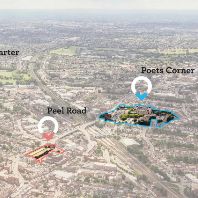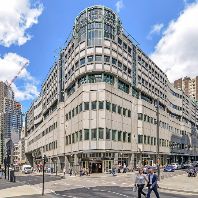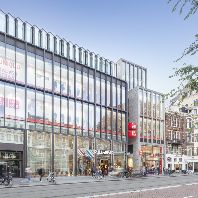2011 is expected to see an increase in industrial project deliveries in Central and Eastern Europe (CEE), mainly based in Poland and Russia, according to CB Richard Ellis (CBRE). Increased manufacturing productivity and its link with regional CEE markets is causing development activity to move from capital cities towards regional cities.
Jos Tromp, Head of CEE Research and Consultancy, CBRE, said: "Despite uncertainty about medium to longer term economic prospects, economic growth in most CEE markets has turned positive in recent quarters. The two largest economies in the region, Russia and Poland, are expected to expand by over 4% year-on-year in 2011. Germany's strong performance in 2010 has helped most export driven CEE markets. Backed by stronger currencies and commodity prices, Ukraine and Russia, in particular, have also turned the corner. Away from manufacturing, consumer spending has not really picked up in most markets yet.
"An increase in manufacturing and its links with regional cities is prompting a shift of development activity from capital cities towards regional cities. This is especially the case in the Czech Republic and Poland but also to some extent in Hungary and Slovakia. In most markets developers can only develop based on a build-to-suit agreement or when a significant pre-lease is signed. In line with differences in economic performance across the region, most smaller markets are experiencing only limited new developments taking place."
Due to a considerable slowdown in the development pipeline over the past two years, the amount of completions in the major CEE cities reached around 1 million m² in 2010 compared to 2.4 million m² in 2009, a decline of 60%.
Tom Listowski, Head of Industrial and Logistics CEE, CBRE, said: "In CEE, regional markets are traditionally more driven by industrial production than capital city markets, where retail plays an important role. Looking at country-wide vacancy rates, the increased pipeline under construction in Poland may initially seem a bit surprising. Vacancy, however, is generally lower in regional cities than in Warsaw, and the majority of new projects are starting based on build-to-suit agreements".
As a result of stronger manufacturing output, demand for logistics premises has also increased. Total leasing activity in Central Europe (CE) and Romania is getting close to the average seen in 2007-2008.
Vacancy rates have continued to decline in almost every market across Central and Eastern Europe. An average vacancy of 15.9% in CE and Romania shows a decline of over one percentage point compared to the peak measured a year ago. Some markets like Bratislava, Kyiv and Prague have vacancy rates at considerably lower levels than a year ago.
Net effective rental levels for logistics properties in CEE have remained mostly unchanged compared to November 2010. For the capital city markets in CE, net effective rents have remained stable and range from 2.50-4.50/m²/month. Regional markets in CE are generally less expensive with the exception of some Czech cities where low levels of supply are pushing up prices.
In line with a general increased level of interest for property investment in CEE, CEE industrial investment volumes have shown continuous growth since the bottom of the cycle was reached in early 2009. Industrial property investment in 2010 reached 420 million and increased by 40% year-on-year. In 2011 this positive trend has continued.
Tromp commented: "Year-to-date industrial investment volume in 2011 currently amount to 550 million. This volume is, however, positively impacted by the acquisition of the Europolis portfolio by CA Immo. Another significant sale took place in the Czech Republic where EPISO acquired a portfolio of six logistics parks located in Prague and the northern part of the country. The developer VGP sold the schemes for around 300 million."
Source: CB Richard Ellis
 















